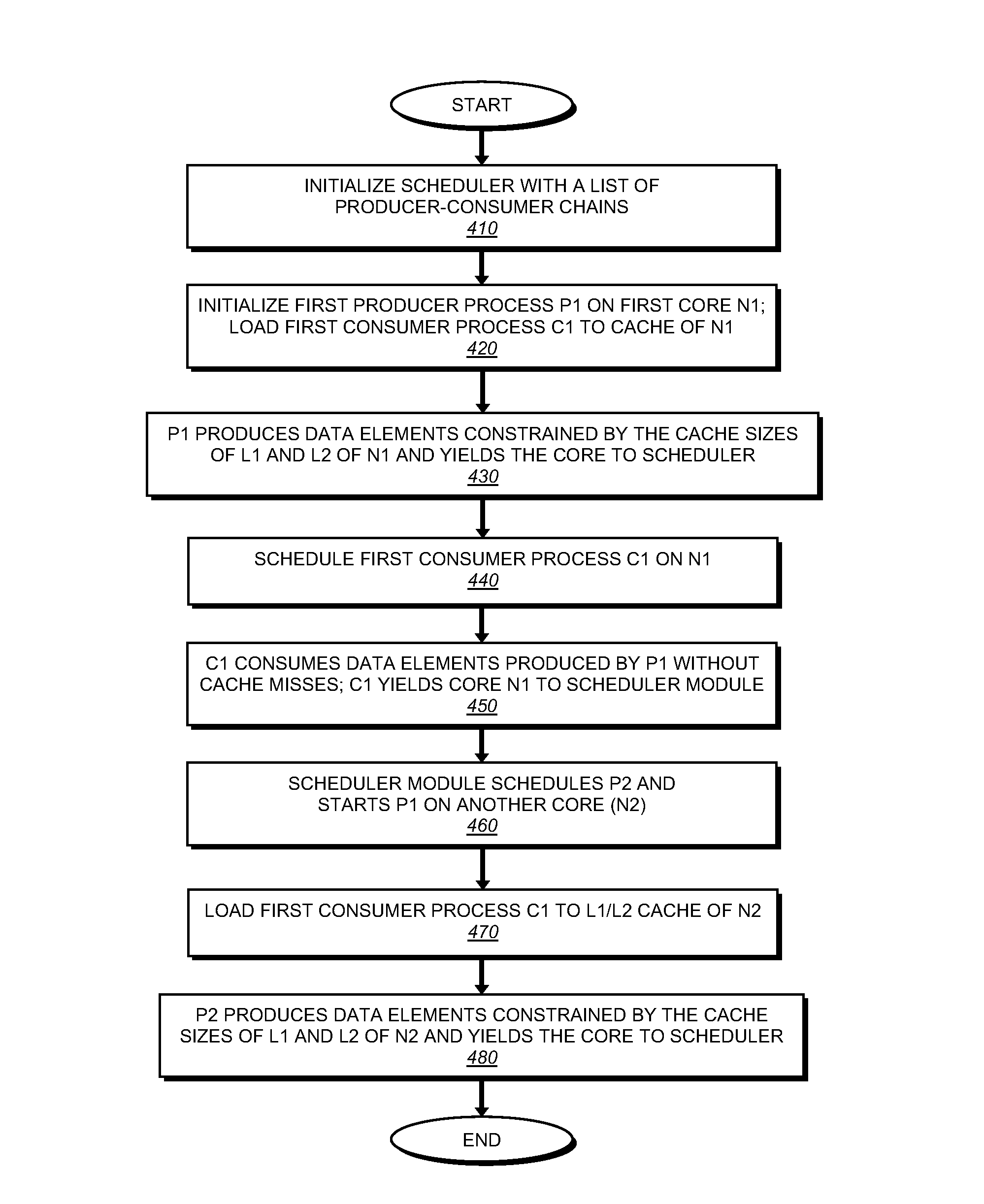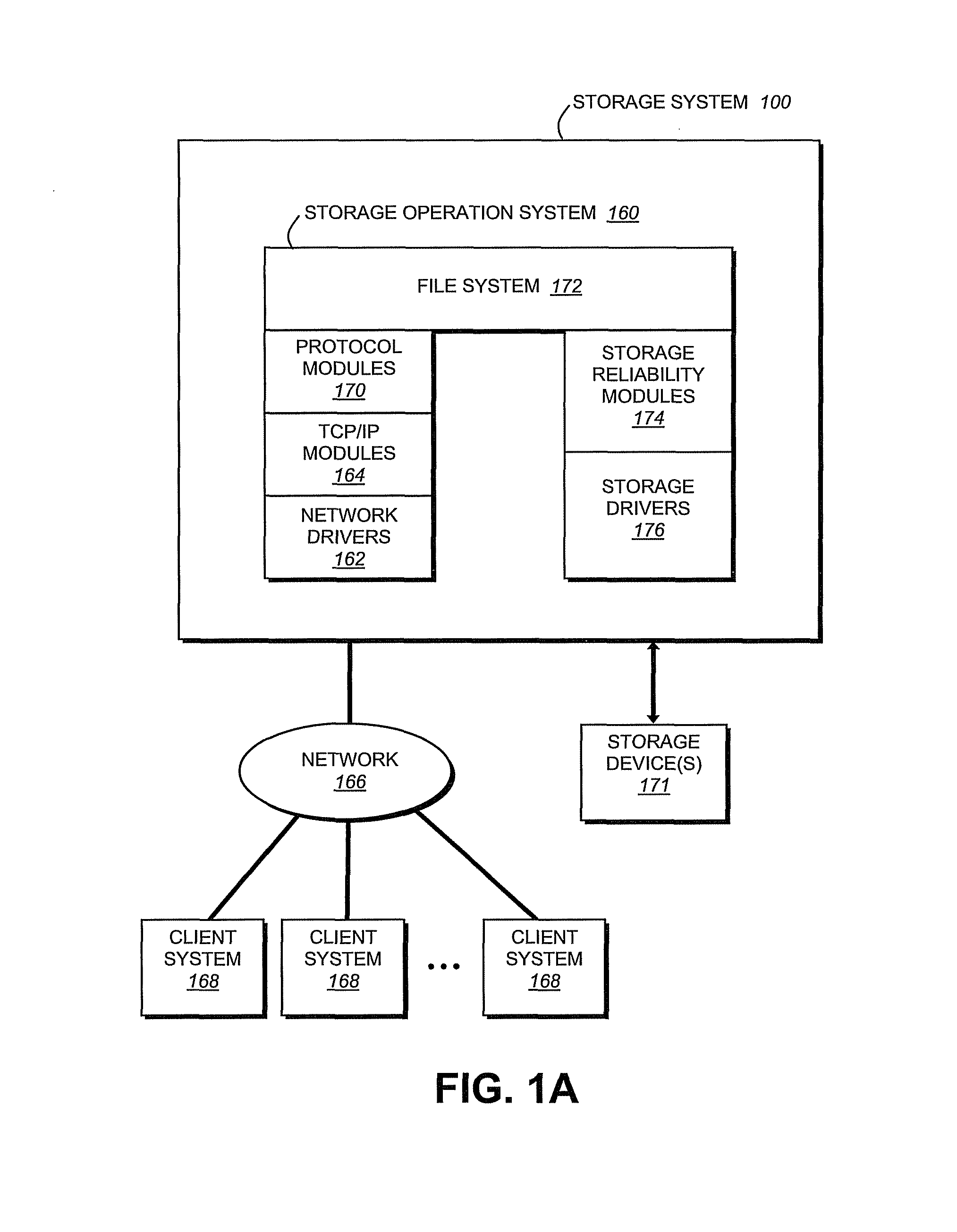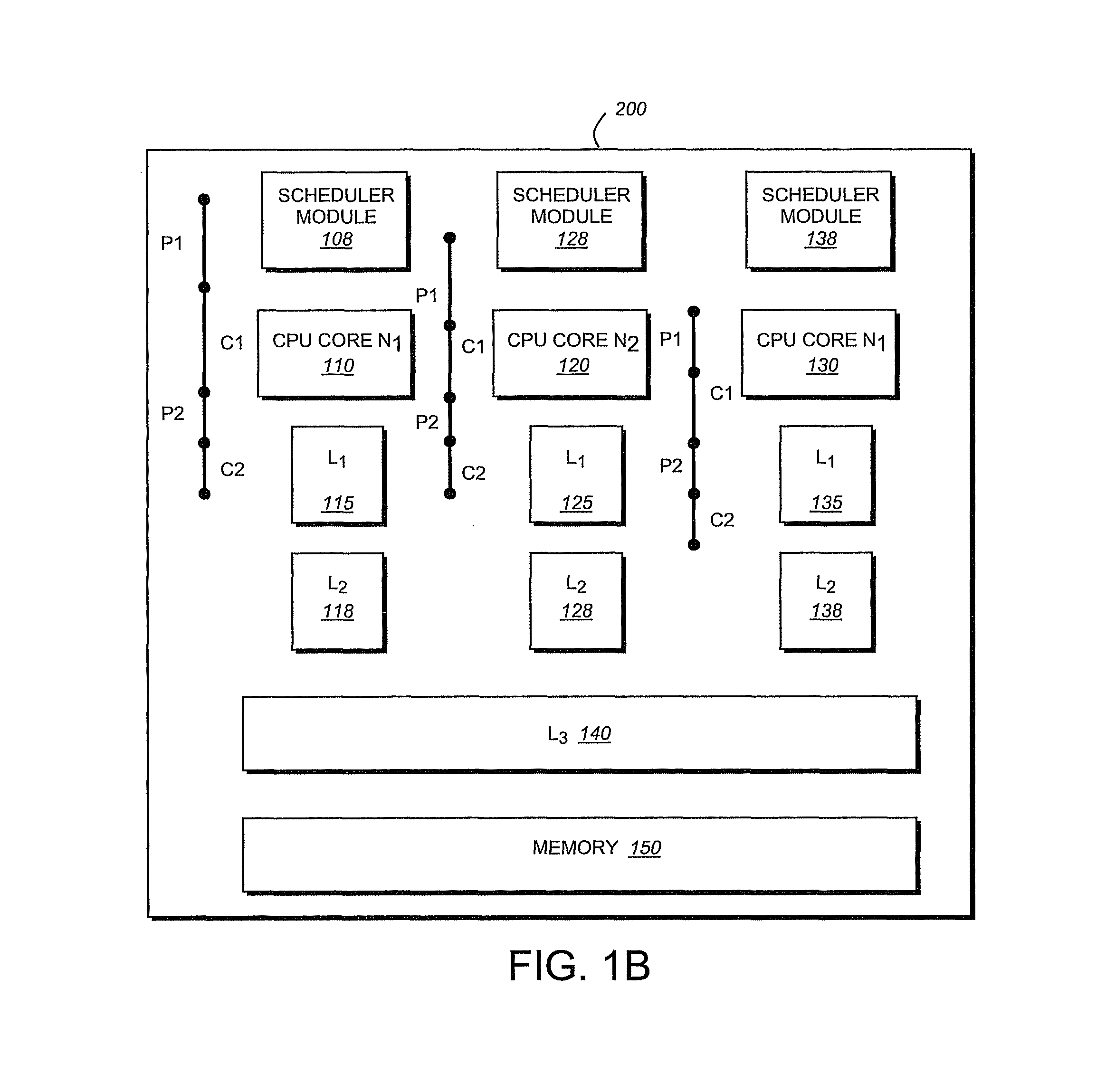Effective scheduling of producer-consumer processes in a multi-processor system
a multi-processor system and producer-consumer technology, applied in the field of improving throughput of computing devices, can solve the problems of affecting the efficiency of producer-consumer communication in multi-core systems, requiring extensive memory access, and virtual addresses cannot be passed directly to consumer processes, so as to improve performance, eliminate compulsory cache misses, and improve throughput
- Summary
- Abstract
- Description
- Claims
- Application Information
AI Technical Summary
Benefits of technology
Problems solved by technology
Method used
Image
Examples
Embodiment Construction
[0022]FIG. 1A is a diagram of an exemplary storage system in which the present invention can be implemented. To illustrate a consumer-producer relationship, processing of a request sent to a storage system (such as storage system 100) can be considered. Such a storage system 100 services data access requests from the client systems 168. A client system (“client”) 168 may be a general-purpose computer configured to execute applications and interact with the storage system 100 in accordance with a client / server model of data delivery. That is, the clients system 168 may request the services of the storage system 100, and the storage system may return the results of the services requested by the client by exchanging data packets over a network (e.g., network 166). A data packet is a unit of data transmitted as a discrete process between devices over a network.
[0023]The clients 168 may issue data packets using file-based access protocols and / or block-based access protocols. An exemplary...
PUM
 Login to View More
Login to View More Abstract
Description
Claims
Application Information
 Login to View More
Login to View More - R&D
- Intellectual Property
- Life Sciences
- Materials
- Tech Scout
- Unparalleled Data Quality
- Higher Quality Content
- 60% Fewer Hallucinations
Browse by: Latest US Patents, China's latest patents, Technical Efficacy Thesaurus, Application Domain, Technology Topic, Popular Technical Reports.
© 2025 PatSnap. All rights reserved.Legal|Privacy policy|Modern Slavery Act Transparency Statement|Sitemap|About US| Contact US: help@patsnap.com



